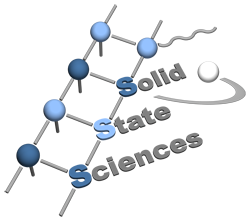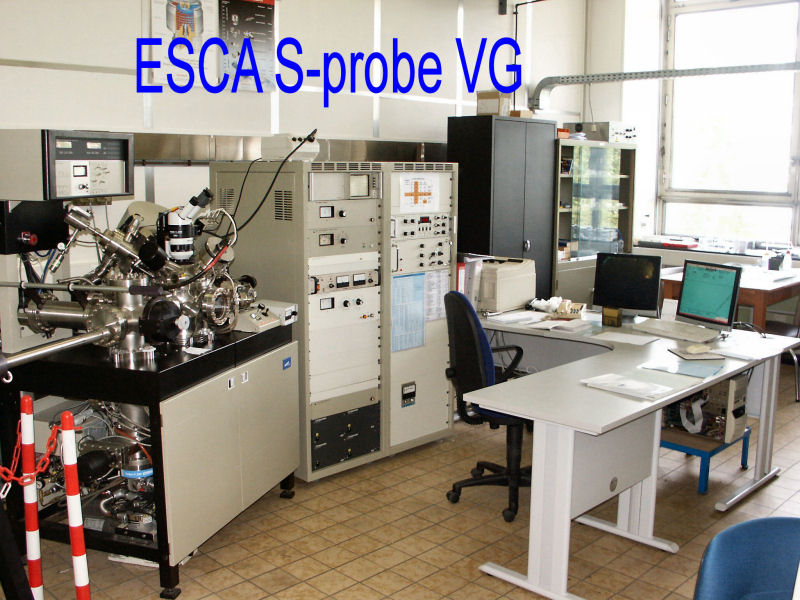Solid State Sciences @ UGent
XPS Surface Analysis Laboratory

Solid State Sciences @ UGentXPS Surface Analysis Laboratory |
 |
X-ray photoelectron spectroscopy (XPS) is a surface-sensitive quantitative spectroscopic technique based on the photoelectric effect.
Elements on the surface (nm range 10-9 m) of a sample can be identified (elemental composition) also their chemical state
and the overall electronic structure. XPS is a powerful measurement technique because it not only shows what elements are present, but also what other elements they are bonded to.
 |
X-ray photoelectron
spectroscopy S-Probe Monochromatized XPS spectrometer Al(KR) radiation (1486 eV) as a probe, Surface Science Instruments (VG) Some Specific Capabilities. Compositional Analysis: Atomic abundance of all
elements (except H) on insulators, powders,metals, etc. Specifications • Detection limits (all elements except H): ~ 0.01 monolayer, or ~ 0.1% bulk • Measurement depth: 1 - 5 nm; area: 0.2 - 1 mm dia. (+ depth profiling with ion gun) • Sample size: 0.1mm to 70mm dia. x 20 mm thick • Spectrometer: Monochromatized Al(ka) Source; Vacuum ~ 5 x 10e(-10) mbar |
| XPS lab : 43.72 Nico De Roo : 43.69 |
Calendar
of VG XPS Website Department of Solid State Sciences |